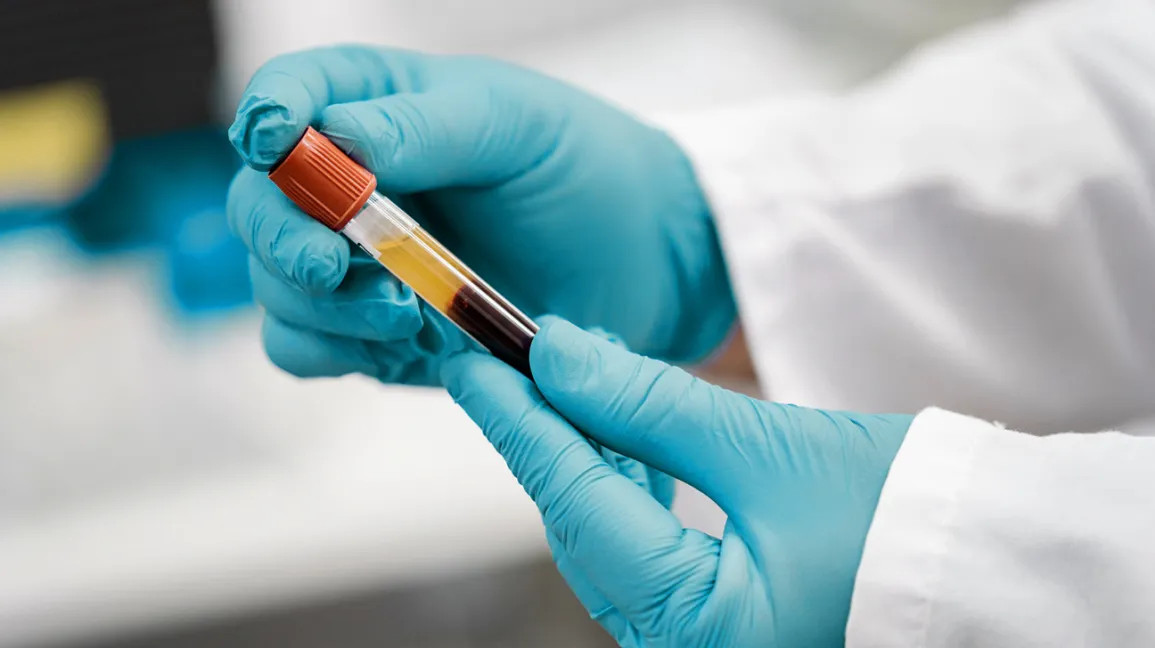Definition
Von Willebrand disease (VWD) is a blood disorder characterized by impaired blood clotting. Blood contains various proteins crucial for clot formation when needed, including von Willebrand factor (VWF). Individuals with VWD either have low levels of VWF protein in their blood, or the VWF protein does not function properly.
Normally, when someone sustains an injury and begins to bleed, VWF in the blood adheres to platelets or blood cells. This process helps the blood cells stick together like glue, forming a blood clot at the injury site and halting the bleeding.
In individuals with von Willebrand disease, the deficiency or impairment of the VWF protein leads to abnormalities in the process of blood clot formation during bleeding. This may result in prolonged clotting times or improper clot formation. Consequently, bleeding takes longer to stop, and in severe cases, excessive bleeding can endanger the patient's life. Additionally, although rare, bleeding episodes may cause damage to joints or internal organs.
The von Willebrand disease affects approximately 23 to 110 out of 1 million people globally. Some patients may experience bleeding problems for years before being diagnosed with von Willebrand disease.
Causes
Von Willebrand disease is primarily caused by mutations in the gene responsible for controlling von Willebrand factor. These mutations, or abnormal changes in the gene, are inherited from parents to their children. Parents carrying the gene mutation have a 50% chance of passing it on to their biological children. As a result of the gene mutation, the body's ability to produce von Willebrand factor is impaired, leading to disruptions in the blood clotting process during bleeding.
While extremely rare, some individuals may develop von Willebrand disease later in life due to spontaneous genetic mutations. Unlike inherited cases, these individuals do not inherit the genetic mutation from their parents. Instead, the gene mutates independently, often due to underlying medical conditions such as cancer or autoimmune diseases. In these cases, the immune system may mistakenly destroy von Willebrand factor in the body. The genetic mutation acquired in this manner also has the potential to be passed on to subsequent biological children.
Risk factor
Most cases of von Willebrand disease are inherited from parents to children, so a family history of the disease is a significant risk factor. Parents with von Willebrand disease can transmit the genetic mutation to their children, increasing the likelihood of inheriting the condition.
Symptoms
Von Willebrand disease manifests in three main types:
- Type 1: The most common and mildest form, characterized by lower than normal levels of von Willebrand factor (VWF) protein and, often, decreased levels of another clotting factor, factor VIII.
- Type 2: Despite normal VWF protein levels, the protein does not function properly.
- Type 3: The most severe form, with very low or absent VWF levels, often accompanied by decreased factor VIII levels. This type is the rarest.
Many individuals with von Willebrand disease may exhibit no symptoms or only mild ones. Common signs and symptoms include:
- Nosebleeds, which may be spontaneous, frequent (occurring five or more times a year), lasting over 10 minutes, and requiring medical intervention to stop bleeding.
- Easy bruising, even without injury, with frequent bruising (occurring 1-4 times a month) and noticeable swelling.
- Heavy menstrual bleeding, characterized by frequent pad or tampon changes and lasting longer than seven days.
- Anemia, indicated by a low red blood cell count.
- Excessive bleeding following surgical procedures or childbirth.
- Bleeding in the digestive or urinary tract, often identified by blood in stool or urine.
Diagnosis
When a patient consults with a doctor, the doctor typically conducts a comprehensive interview covering the following areas:
- Patient's complaints and symptoms experienced.
- There is a history of abnormal bleeding or bruising in the patient and their family.
- Medical history of the patient and their family, including any past illnesses or conditions.
- Previous treatments the patient has undergone or is currently undergoing
After the interview, the doctor will conduct a physical examination to assess the patient's condition. This may include checking for bruises or signs of bleeding on the body. Further diagnostic tests are then performed to assist in establishing a diagnosis. Some of these tests may include:
- Complete blood count (CBC) to assess levels of red blood cells, white blood cells, and platelets. Anemia due to the condition may result in a decrease in red blood cell count.
- Platelet aggregation studies to measure how well platelets function in clot formation.
- Prothrombin time (PT) and activated partial thromboplastin time (APTT) tests, which assess how long it takes for blood to clot.
- von Willebrand factor testing, if feasible, to assess the levels and functionality of this clotting factor.
Management
Several types of treatment are available for von Willebrand disease, and the choice depends on the type and severity of the condition. Treatment aims to reduce bleeding symptoms and may be administered to patients experiencing significant bleeding or undergoing surgical procedures.
Desmopressin is a medication commonly used to treat von Willebrand disease, especially type 1. It is administered intravenously to increase thelevels of von Willebrand factor (VWF) and factor VIII in the body.
For individuals with more severe forms of von Willebrand disease, medications containing VWF and factor VIII proteins may be prescribed. These medications are typically administered via intravenous injection to replace deficient VWF protein levels in the blood. Some patients may require regular treatment to maintain stable levels of von Willebrand factor.
Additionally, antifibrinolytic drugs may be prescribed to prevent the breakdown of blood clots in bleeding conditions. These medications are commonly used before dental procedures or to manage heavy menstrual bleeding. Contraceptive pills containing estrogen may also be recommended to increase von Willebrand factor levels in the bloodstream, particularly in cases of heavy menstrual bleeding.
In addition to medical treatment, individuals with von Willebrand disease can take proactive steps to reduce the risk and severity of the condition:
- Avoid activities with a high risk of injury or physical trauma, particularly contact sports or activities that may lead to bruising or bleeding.
- Provide comprehensive medical history information to healthcare professionals,
- Avoid the use of aspirin and nonsteroidal anti-inflammatory drugs (NSAIDs) such as ibuprofen, which can increase the risk of bleeding.
- Be cautious with dietary supplements containing vitamin E, fish oil, or turmeric
Complications
Some complications associated with von Willebrand disease are typically related to severe bleeding. Untreated bleeding can lead to anemia, which is characterized by a decrease in red blood cell count. Additionally, patients may experience pain and swelling if abnormal bleeding occurs in soft tissues or joints.
Prevention
There's no specific way to prevent von Willebrand disease. However, if you're planning to have children and have a family history of the condition, consider genetic counseling. This can help you understand the risk of passing the von Willebrand disease gene to your offspring.
When to see a doctor?
If you experience the symptoms mentioned above or have a family history of von Willebrand disease, it's important to consult a doctor. A doctor can assess your symptoms, conduct necessary tests, and provide appropriate treatment or referrals to specialists.
Looking for more information about other diseases? Click here!
- dr Hanifa Rahma
CDC - What is Von Willebrand Disease? (2022). Retrieved 28 March 2023, from https://www.cdc.gov/ncbddd/vwd/facts.html#.
Cleveland Clinic - Von Willebrand Disease (2022). Retrieved 28 March 2023, from https://my.clevelandclinic.org/health/diseases/17709-von-willebrand-disease.
Mayo Clinic - Von Willebrand Disease (2021). Retrieved 28 March 2023, from https://www.mayoclinic.org/diseases-conditions/von-willebrand-disease/symptoms-causes/syc-20354978.











